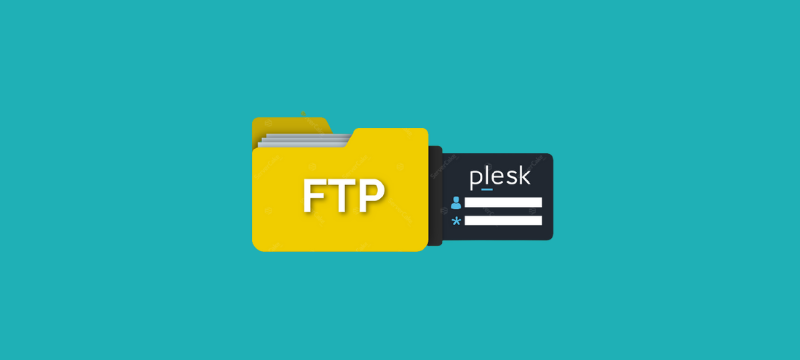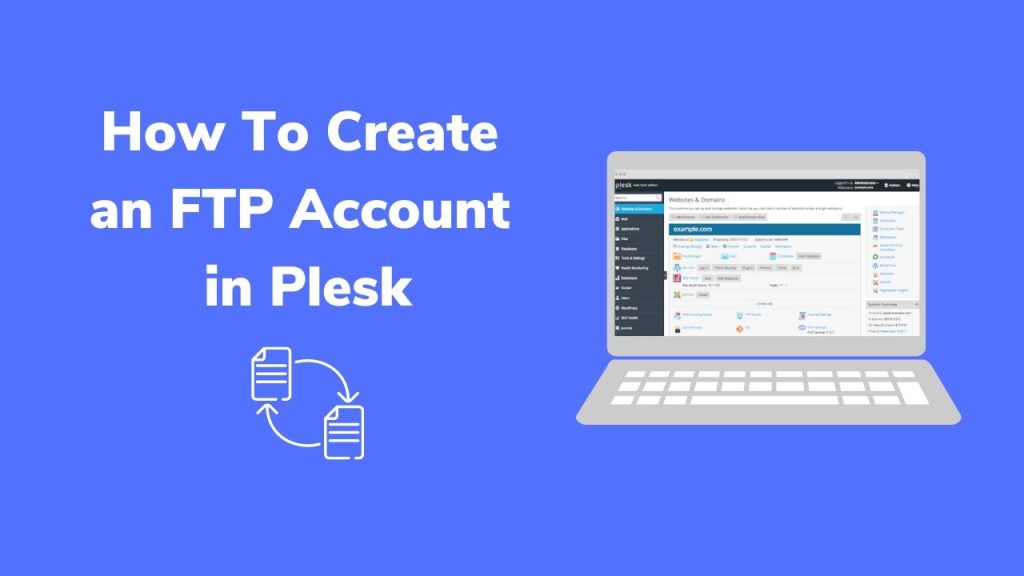Managing FTP accounts in Plesk involves creating, modifying, and deleting FTP accounts in Plesk for your hosting environment. Here’s a step-by-step guide on how to manage FTP accounts in Plesk:

FTP accounts in Plesk
Creating an FTP Account
- Log in to Plesk:
- Open your web browser and navigate to the Plesk login page.
- Enter your username and password, then click “Log in.”
- Navigate to Websites & Domains:
- On the left sidebar, click on “Websites & Domains.”
- Open FTP Access:
- Find the domain for which you want to create an FTP account and click on it.
- Click on “FTP Access” under the domain.
- Add New FTP Account:
- Click on the “Add an FTP Account” button.
- Fill in the required fields:
- FTP account name: The username for the FTP account.
- Home directory: The directory that the FTP user will have access to. Typically, it’s set to the root directory of the domain.
- Password: Enter a strong password for the FTP account.
- Confirm password: Re-enter the password.
- Optionally, you can set specific permissions and quotas.
- Click “OK” to create the account.
Modifying an FTP Account
- Access FTP Accounts:
- Follow steps 1-3 from the “Creating an FTP Account” section.
- Edit FTP Account:
- In the list of FTP accounts, find the account you want to modify.
- Click on the username of the account.
- Modify the settings as needed (e.g., password, home directory, permissions).
- Click “OK” to save the changes.
Deleting an FTP Account
- Access FTP Accounts:
- Follow steps 1-3 from the “Creating an FTP Account” section.
- Delete FTP Account:
- In the list of FTP accounts, find the account you want to delete.
- Select the checkbox next to the account name.
- Click on the “Remove” button.
- Confirm the deletion when prompted.
Additional Tips
- Setting Permissions: Ensure that the home directory and file permissions are set correctly to prevent unauthorized access.
- Quotas: If you have disk space limitations, setting quotas can help manage how much space each FTP account can use.
- Security: Regularly update passwords and review FTP account activity to maintain security.
By following these steps, you can efficiently manage FTP accounts in Plesk, ensuring secure and organized access to your server’s files.
FTP (File Transfer Protocol) accounts offer several advantages, particularly for managing and transferring files in a web hosting environment. Here are some of the key benefits:
1. Efficient File Management
- Bulk Upload and Download: FTP accounts allow for the efficient transfer of large quantities of files and large file sizes, making it easier to manage website content, backups, and updates.
- Resume Transfers: Many FTP clients support resuming interrupted transfers, ensuring that large files can be transferred reliably even with unstable internet connections.
2. User Management and Permissions
- Controlled Access: By creating multiple FTP accounts, you can grant different levels of access to different users, ensuring that each user has access only to the files and directories they need.
- Custom Permissions: You can set read, write, and execute permissions for different directories, providing granular control over who can modify or view specific files.
3. Security
- Isolation of Accounts: Each FTP account can be restricted to its own home directory, preventing users from accessing each other’s files and enhancing security.
- Secure Transfers: FTP can be configured to use secure versions like FTPS (FTP Secure) or SFTP (SSH File Transfer Protocol), which encrypt data during transfer to protect sensitive information.
4. Automation and Scripting
- Automated Processes: FTP is supported by many automation tools and scripts, allowing for automated backups, file synchronization, and other repetitive tasks without manual intervention.
- Integration with Software: Many web development tools and CMS (Content Management Systems) support FTP for seamless deployment and updates of website content.
5. Cross-Platform Compatibility
- Wide Support: FTP is a widely supported protocol available on virtually all operating systems and many types of software, ensuring compatibility and ease of use across different platforms.
6. Remote Management
- Global Access: With an FTP account, users can access files on the server from anywhere in the world, facilitating remote work and collaboration.
- Multiple Clients: There are numerous FTP client applications available, both free and paid, offering a variety of features and interfaces to suit different user preferences.
7. Efficiency for Web Development
- Real-Time Updates: Web developers can upload and modify files directly on the server in real-time, speeding up the development and deployment process.
- Version Control: FTP can be integrated with version control systems to keep track of changes and ensure that the latest versions of files are deployed.
Summary
FTP accounts provide a robust, flexible, and secure method for managing files in a web hosting environment. They offer efficient file transfer capabilities, customizable user permissions, secure data transmission, automation opportunities, and broad compatibility with various platforms and tools. These advantages make FTP an essential tool for web developers, administrators, and anyone needing reliable file management and transfer solutions.



